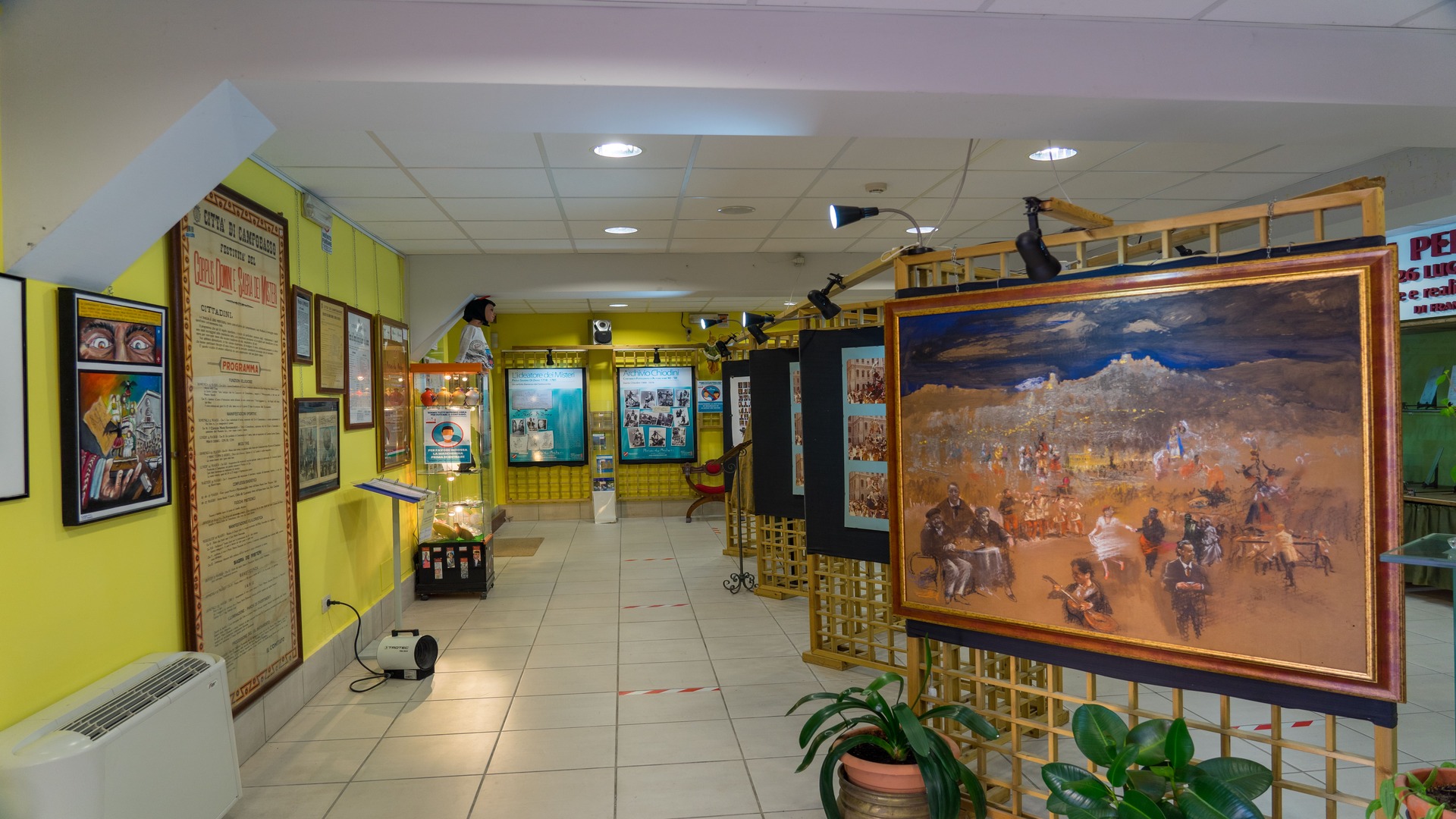The Misteri Museum, inaugurated on October 07, 2006, is an indispensable reality to give dignity to Paolo Saverio di Zinno's ingenuity and to the "Ingegni" he conceived and realized in the middle of the XVIII century, that on Corpus Domini day. Eleven years after its opening, it is the most visited museum in the Molise region with over 220 thousand visitors, 200 events, 90 thousand catalogued photographs, 300 dated documents and 500 videos. The Museum was set up in the structure (ex ENAL) in Via Trento with regional funding.
The "mysteries" are "machines" or "ingenuities" made up of a wooden
base in which a forged iron structure is inserted, which, developing vertically, branches out and carries harnesses at each end, in each of which a child is placed. The children represent angels, devils, saints and madonnas and seem to be suspended in the void because their costumes mask the structure and the harnesses. On the base of the Mystery there are other characters interpreted, depending on the role, by children or adults. The Mysteries are carried on the shoulders in procession through the streets of the city and the rhythmic pace of the bearers, swinging the iron structure, creates the illusory sensation of seeing angels and devils flying several meters above the ground. It is important to underline the intelligence of the artist and the great professional ability of his blacksmith collaborators, who well sized the structure and used some constructive artifices (the boiling technique) to realize devices that still today, after more than 250 years, we can admire in their full functionality. The expression "living pictures" is well suited to these devices in which the dynamism of the figures blends perfectly with the static iron structure.
2 Cultura Arte e Tradizione - Museo dei Misteri Campobasso
Back 2 Cultura Arte e Tradizione - Museo dei Misteri Campobasso

Virtual tour
Location
Related resources
Culture, art and tradition
Culture, art and tradition are often interweaved in an itinerary that crosses the whole region and includes medieval castles, peasant and craft museums, places where popular traditions are carefully preserved.
